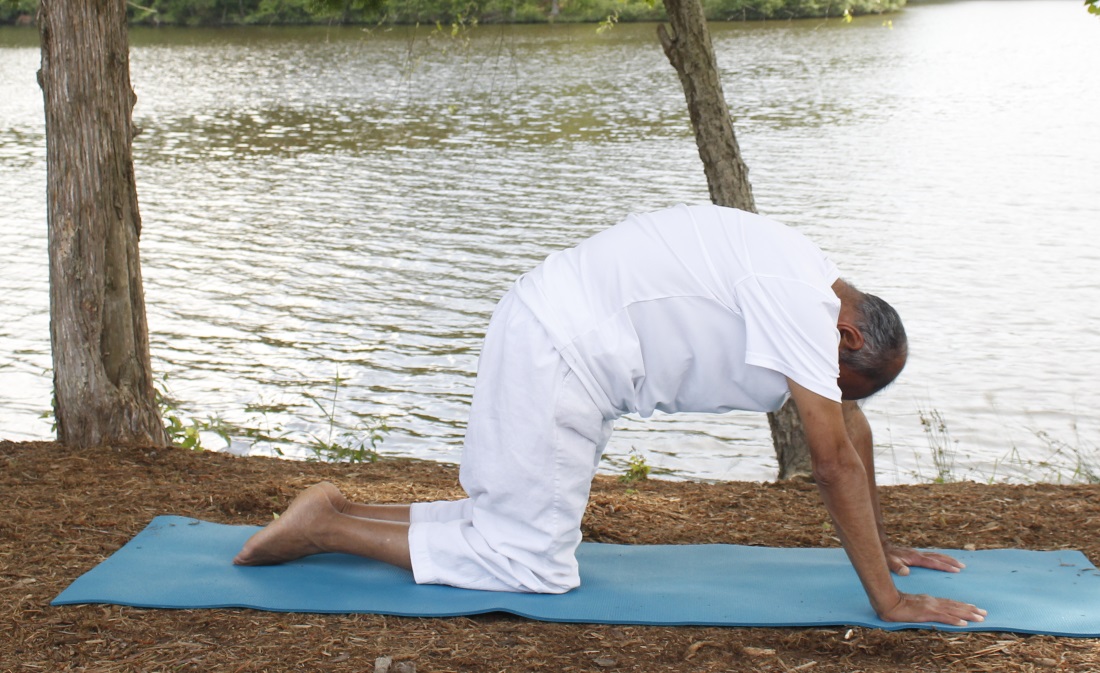
Cat Pose
In this article, I am presenting a few simple poses that can help strengthen the back and relieve back pain. Back pain, especially pain in the lower back, is perhaps the single most common reason why people seek medical attention. This is also the most common cause why people come to yoga classes. On a quick google search, I found several studies that have confirmed that yoga indeed provides a lot of relief to backache sufferers. Despite the well-known benefits that can come with a regular yoga practice, it is strongly advised that in case of severe pain you consult with your doctor before commencing a yoga routine.
Most of the poses mentioned in this article have already been discussed individually in earlier blog articles. In this video I have combined these simple asanas for taking care of low back pain in a single video sequence. This way you can follow the video for this sequence to derive full benefits from the practice.
I hope you will enjoy practicing with this video sequence.
What Causes Back Pain?
I will not attempt to go through any details on the causes for back pain. I suggest that you consult a book on the subject or visit one of many websites that deal with the topic in detail (e.g., http://www.backpaindetails.com/pain/). Briefly, these are the possible causes: injury (particularly casued in an auto accident), arthritis, spondylitis, osteoporosis, back pain during pregnancy, poor sitting, standing or walking posture, emotional stress, obesity, herniated disk, diabetes, aging etc.
General Guidelines
Here are some basic guidelines that will help you with the back pain and also prevent any futher injury or aggrevation of an existing condition.
- Keep in mind that the body functions as a unified, integrated whole. A dysfunction in one part of the body can have repercussions in other areas of the body. Back pain is no exception. As stated above, it can be caused by reasons that are internal or external to us. Stress and poor posture are two of the important factors that can easily aggrevate an otherwise mild discomfort in the back. Thus, an integrated approach involving body, breath and mind needs to be used in dealing with and alleviating back pain. I do not recommend an approach that is limited to just a small, fragmented set of asanas only. An integrated approach should include asana, pranayama, relaxation and meditation to heal the body at all levels. Of course, in the routine that you develop for yourself, you should emphasize the asanas that are mentioned here.
- Avoid a deep stretch in the forward-bending poses – standing (Uttanasana) or seated forward bend (Paschimottanasana); practice these poses only gently.
- Avoid deep back-banding poses – wheel pose (chakrasana), upward-facing dog (urdhva-mukka shvanasana), full locust (shalabhasana) and any other pose that creates a deep back bend; A gentler version of Dhanurasana (bow pose) may be practiced as long as it feels comfortable.
- Most twisting poses (lying spinal twist, seated spinal twist etc.) as well as poses that develop a good abdominal strength (e.g., boat pose) etc are recommended.
Step-by-step
As I have already discussed many of the poses mentioned here individually in other posts, I am giving here only links to those posts for more details.
Marjarasana (cat and cow stretch)

Cat Pose
Cat-and-cow is a popular warmup stretch that helps strengthen and align the spine muscles. In addition to the spine, it also strengthens the abdominal muscles.
Ushtrasana (Camel pose)
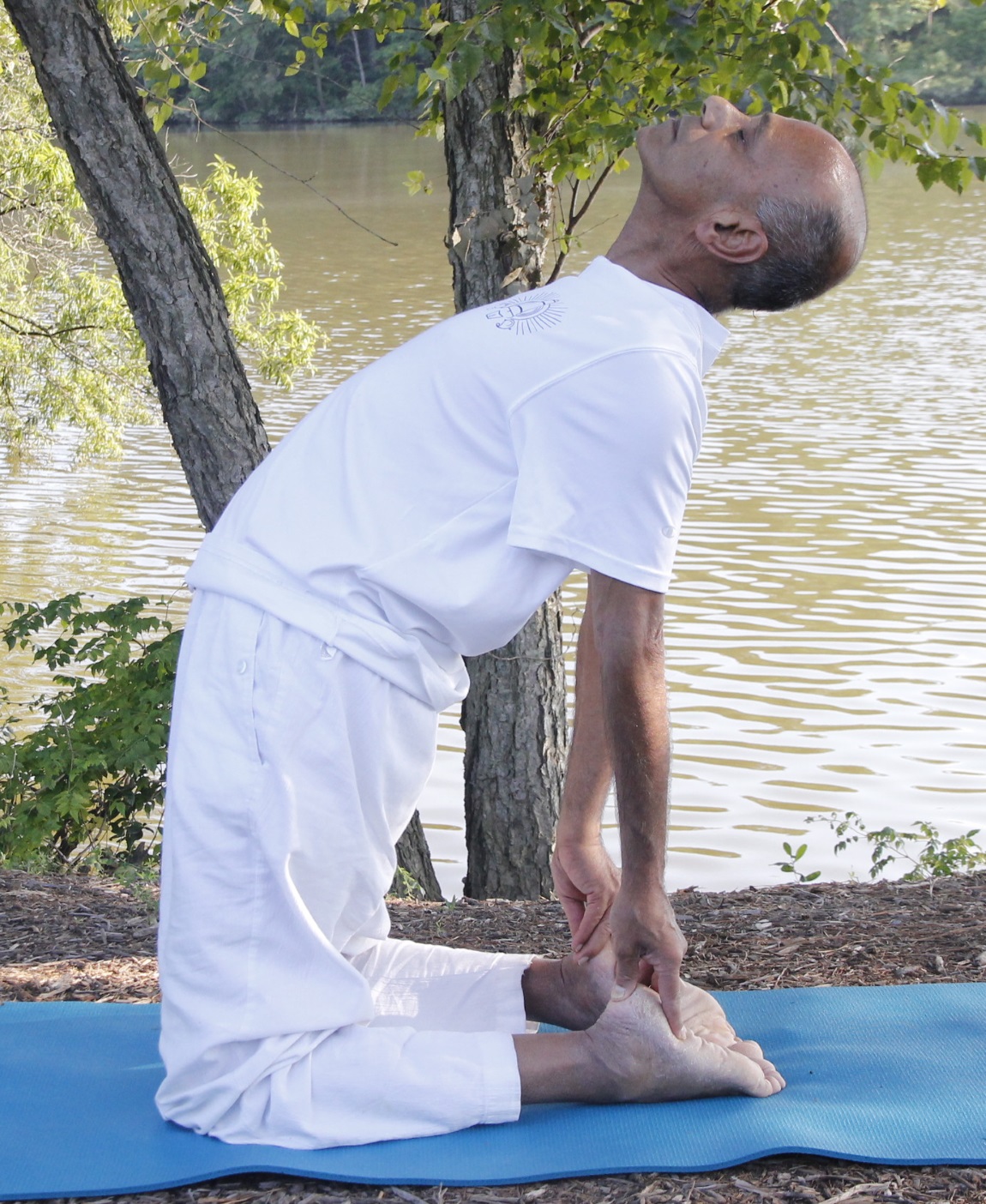
Ushtrasana (camel)
Camel Pose (Ushtrasana – उष्ट्रासन) is one of the commonly practiced backward-bending poses. It is an intermediate level back bending pose and stretches both the front and back sides of the body. The Sanskrit word ‘ushtra’ means a camel. It is not clear why the pose is named after a camel since the final pose doesn’t look anything like a camel. Maybe it is because the pose can store energy which can be released later, similar to a camel’s ability to store water for a long time.
Bhujangasana (Cobra pose)
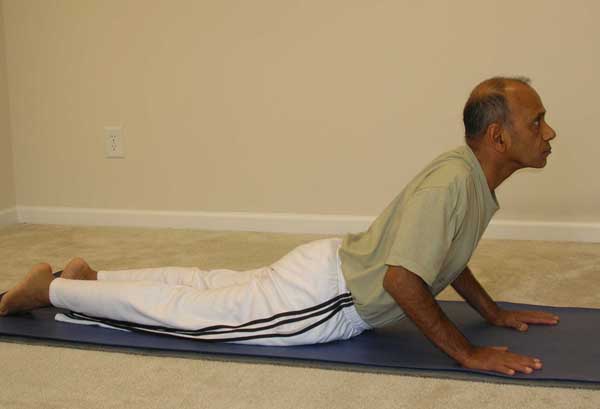
Bhujangasana (Cobra Pose)
An excellent backward bending pose, Bhujangasana –भुजङ्गासन – (Cobra Pose) is a beginner level asana which can either be done as part of the Surya Namaskar (Sun Salutation) routine or as an independent asana. It provides a great stretch for the whole back.
For a simple variation of the cobra pose, with the chest lifted up, rest the cheeks on the palms. Then try to bring one heel at a time toward your buttocks. After six to eight of the alternate moves, pause and then start bringing both the heels together close to the buttocks at a rhythmic pace. Practice these moves about six to eight times.
Forearm Plank Pose
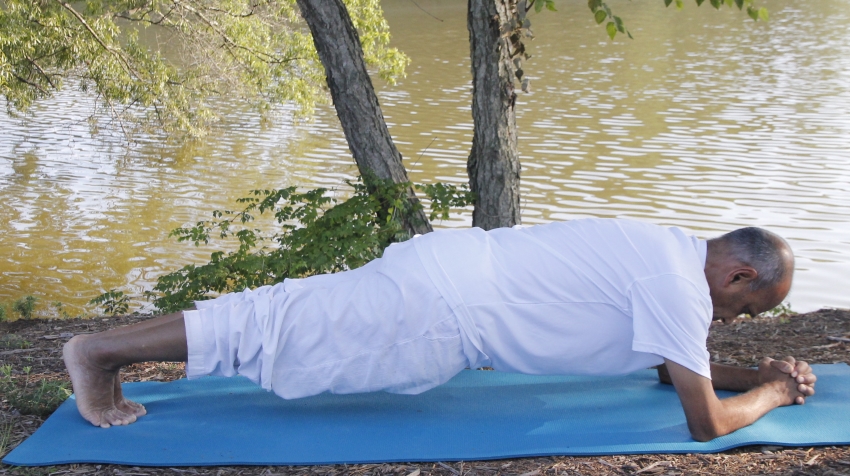
Forearm Plank
One of the commonly practiced asanas for building strength in the arms and shoulders and also for a strong core is the Chaturanga Dandasana (four-limbed staff pose). This pose is commonly integrated as part of the Surya Namaskar sequence; however, it can also be done independently in association with its close cousin, the plank pose. Chaturanga Dandasana can be a challenging pose for those with weak wrists, arms or shoulders. A variation, called the Dolphin plank pose, is more readily accessible to most students. Even though it is relatively easier to practice it provides all the same benefits as the plank or the chaturanga dandasana, especially because one can hold the pose for a longer duration. This is a great option for those who have weakness in wrists due to sporting activities or repetitious mouse movements in front of the computer.
Pawana-muktasana (Wind-releasing pose)
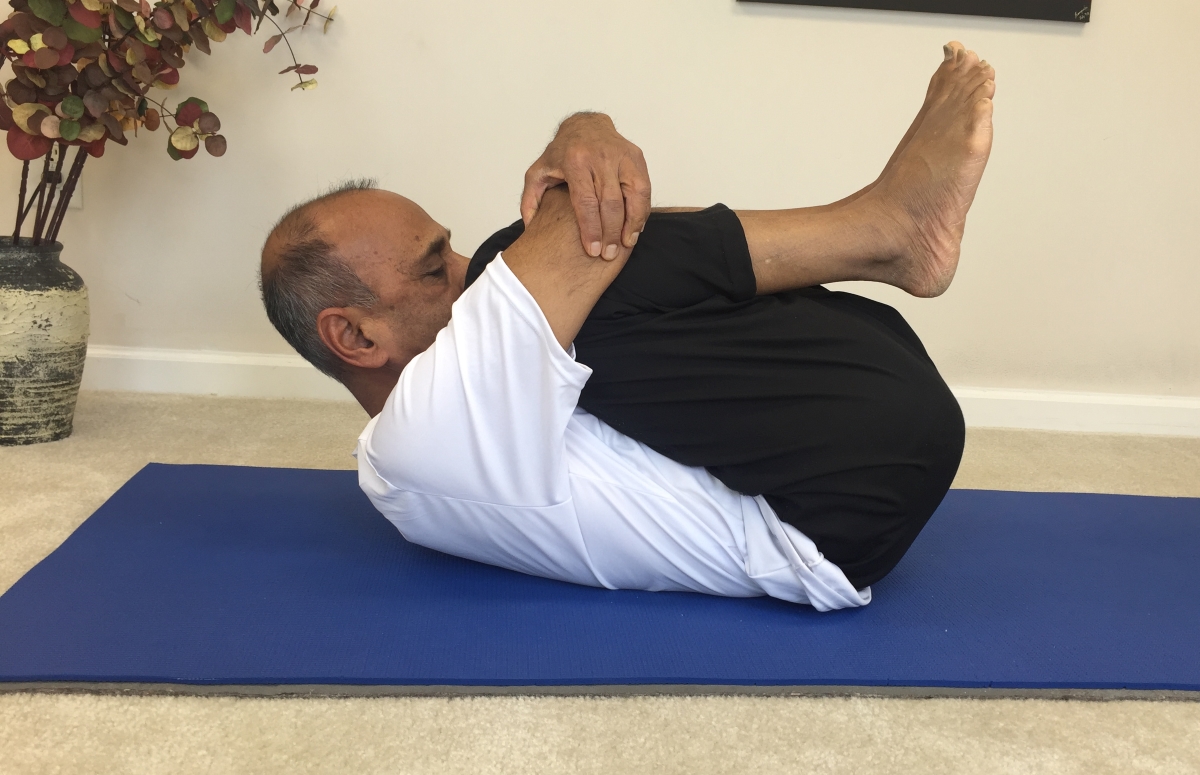
Pawana Muktasana
Pawana-muktasana (PMA) – पवनमुक्तासन – is a simple set of asanas, easy to practice, and yet has many far-reaching benefits. These asanas are great for eliminating excess gases from the digestive tract, strengthening the core muscles, massaging the internal organs and giving relief to the lower back.
The name of the asana is a composite of two words – pawana means the wind or air and mukta means liberated or released. So, the common English translation for the pose is "Wind releasing pose".
Reclining hamstring stretch (Supta-padangushthasana)
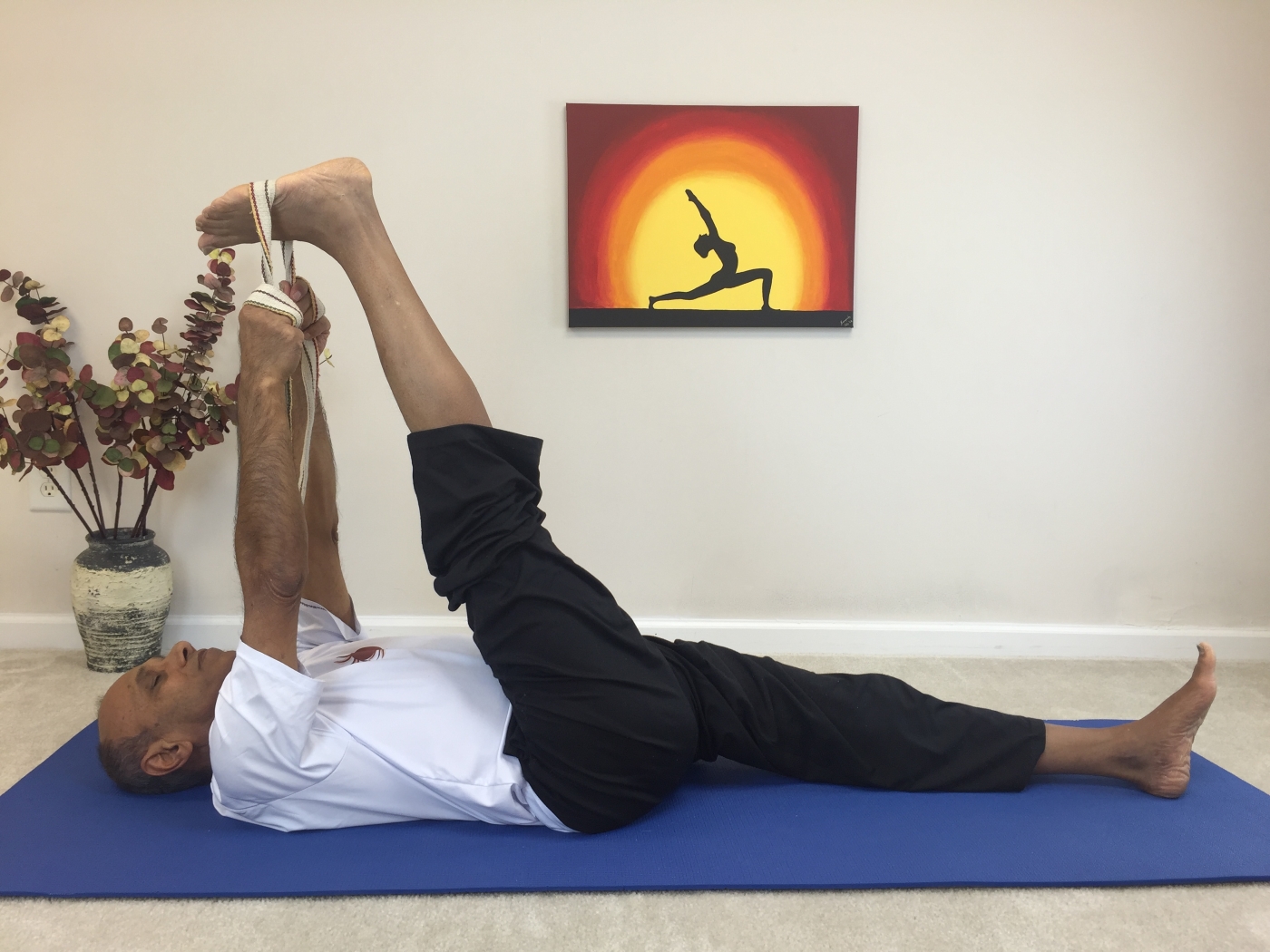
Supta-Padangushthasana (Reclining hand-to-toe Pose) Supta Padangushthasana – सुप्त-पादाङ्गुष्ठासन – is an excellent pose to stretch the hamstrings, hips, back of the knees, calf muscles, and ankles. It is also a great stretch for bringing relief for lower back pain.
Setubandhasana (Bridge pose)
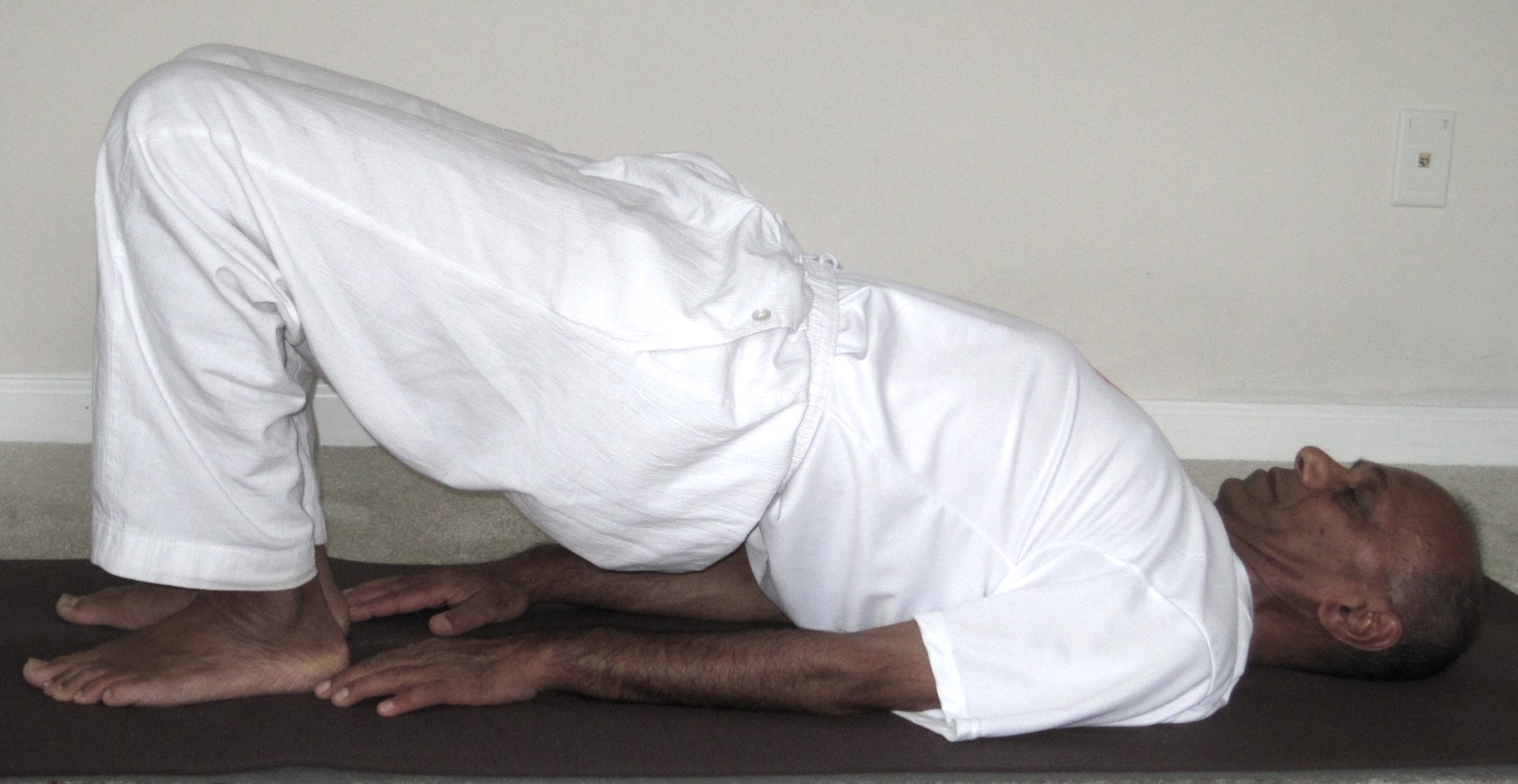
Setubandhasana (bridge)
Setu-bandhasana (Bridge Pose) -सेतुबन्धासन – (Bridge Pose) is a beginner-level pose and is highly beneficial for the health of the shoulders, spine, hips and thighs. At a deeper level, it helps calm the mind and can help relieve stress, mental fatigue, anxiety and depression.
Reclining twist
One of the poses that I recommend highly to relieve lower back pain is the Reclining Twist. In Sanskrit, it is variously named as Jathara Parivartanasana – जठरपरिवर्तनासन – (Abdomen Turning), Udarakarshanasana – उदराकर्षणासन – (abdominal stretching), and Supta Matsyendrasana – सुप्तमत्स्येन्द्रासन – (Reclining twist).
The reclining twist is what I call a "feel good asana" as it stretches multiple parts of the body in a gentle way and brings about a sense of refreshing rejuvenation and detoxification.
Ardha-Matsyendrasana (Seated spinal twist)
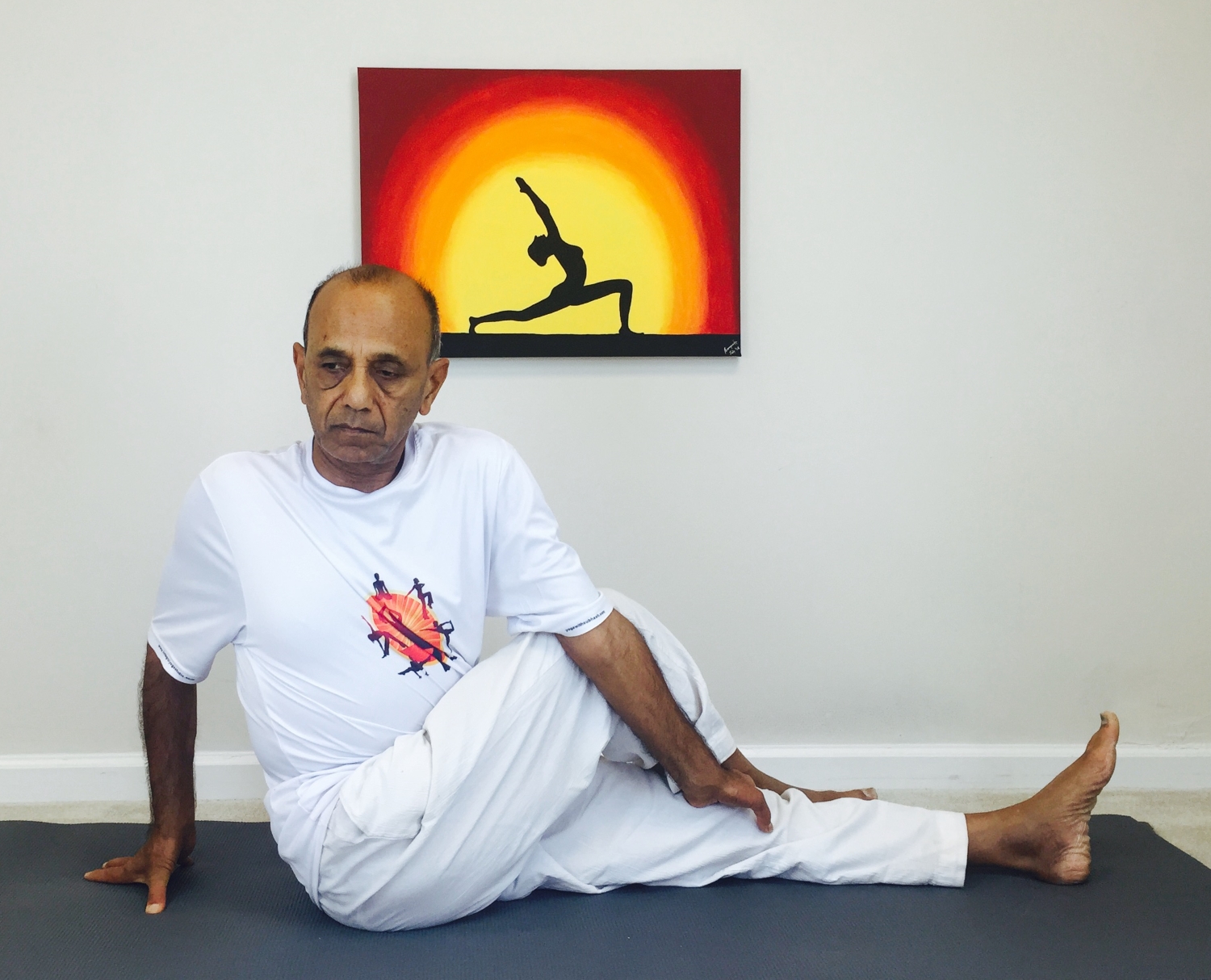
Ardha-Matsyendrasana (spinal Twist)
Ardha Matsyendrasana (Spinal Twist) – (अर्धमत्स्येन्द्रासन) is a very commonly practiced seated spinal twisting pose. The word is a composite two Sanskrit words – ardha, meaning "half" and Matsyendra. The literal meaning of Matsyendra is "lord of fish". However, this pose is named after the great yogi, Matsyendranath, who according to some texts is considered one of the prominent forefathers of modern yoga practices. The pose allows the spine to be twisted all the way from the base of the spine to the very top.
Mandukasana (Frog pose)
This pose can be practiced as a variation of the Yoga Mudra or as an independent pose to massage the internal organs and strengthen the spine.
- Sit in vajrasna with the spine straight
- Close the fists of both hands with the thumb inside the fingers. A variation is to keep your left palm on the navel and the right palm on top of the left palm. Palms may be reversed also.
- Press either side of the navel with the fists or on the navel when the palms are placed on it.
- Exhale and bend forward looking straight ahead with chests pressing against the folded legs.
- Hold for 30 seconds to 1 minute and return to the starting posture inhaling.
- If sitting in vajrasana is not comfortable, you may cross legged (sukhasana) or you may sit on a chair with a straight back with feet resting on the floor.
- Do not worry about getting it “perfect” when you are begin the practice of these asanas. You will get there in course of time.
I hope that by practicing the above sequence you will be able to strengthen your back and get relief from lower back pain.
I would love to hear back from you with your comments or feedback.
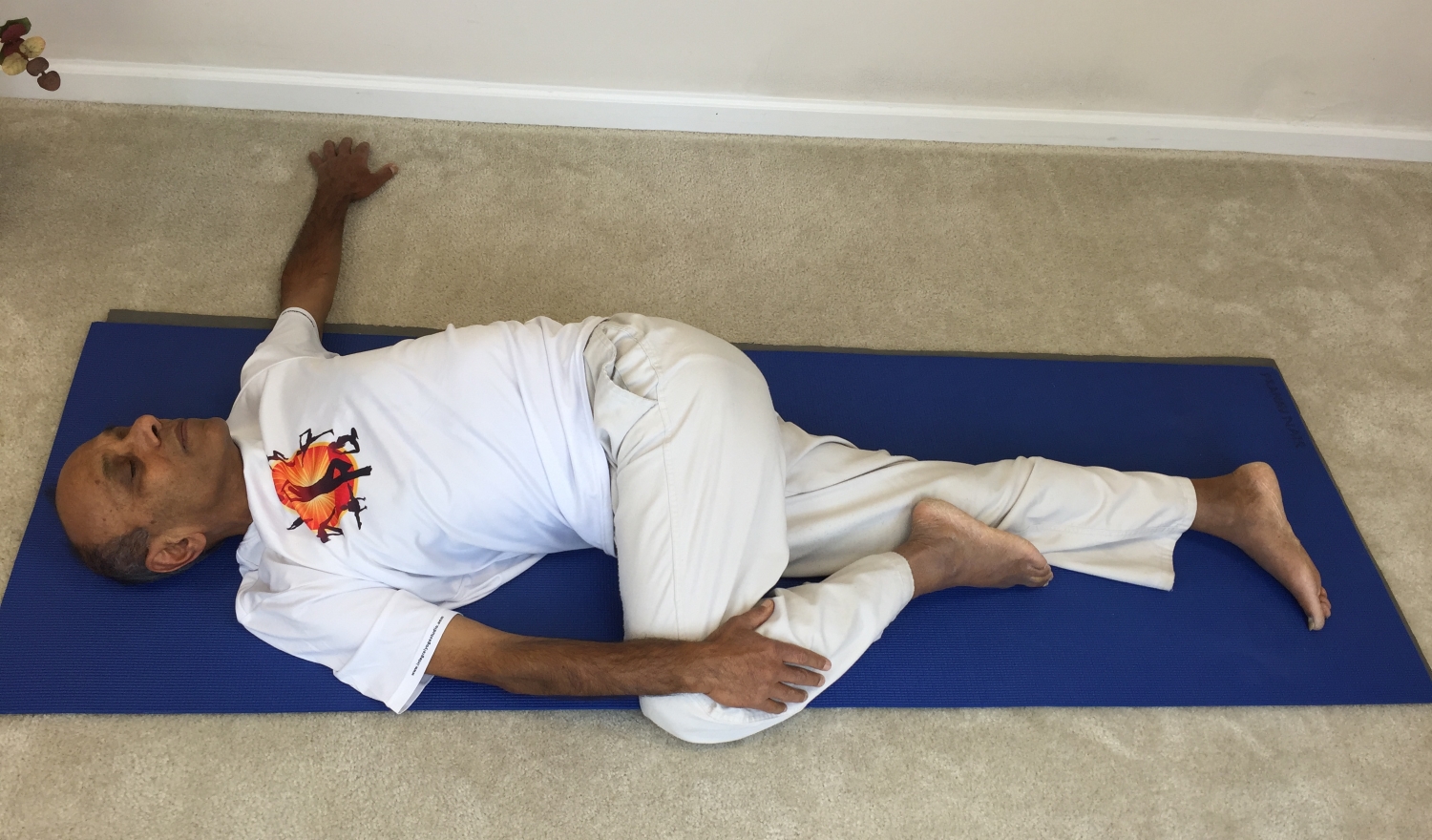
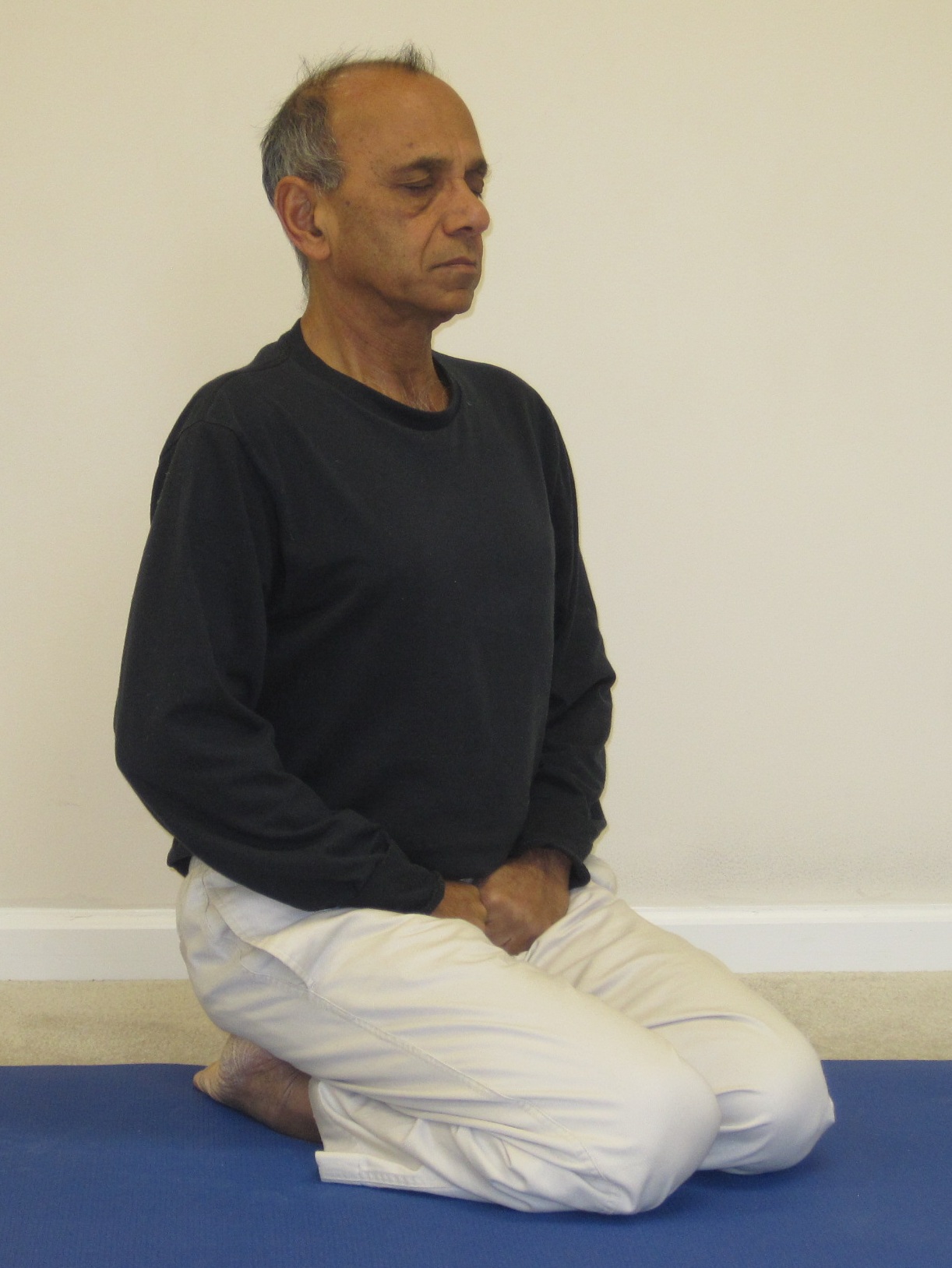
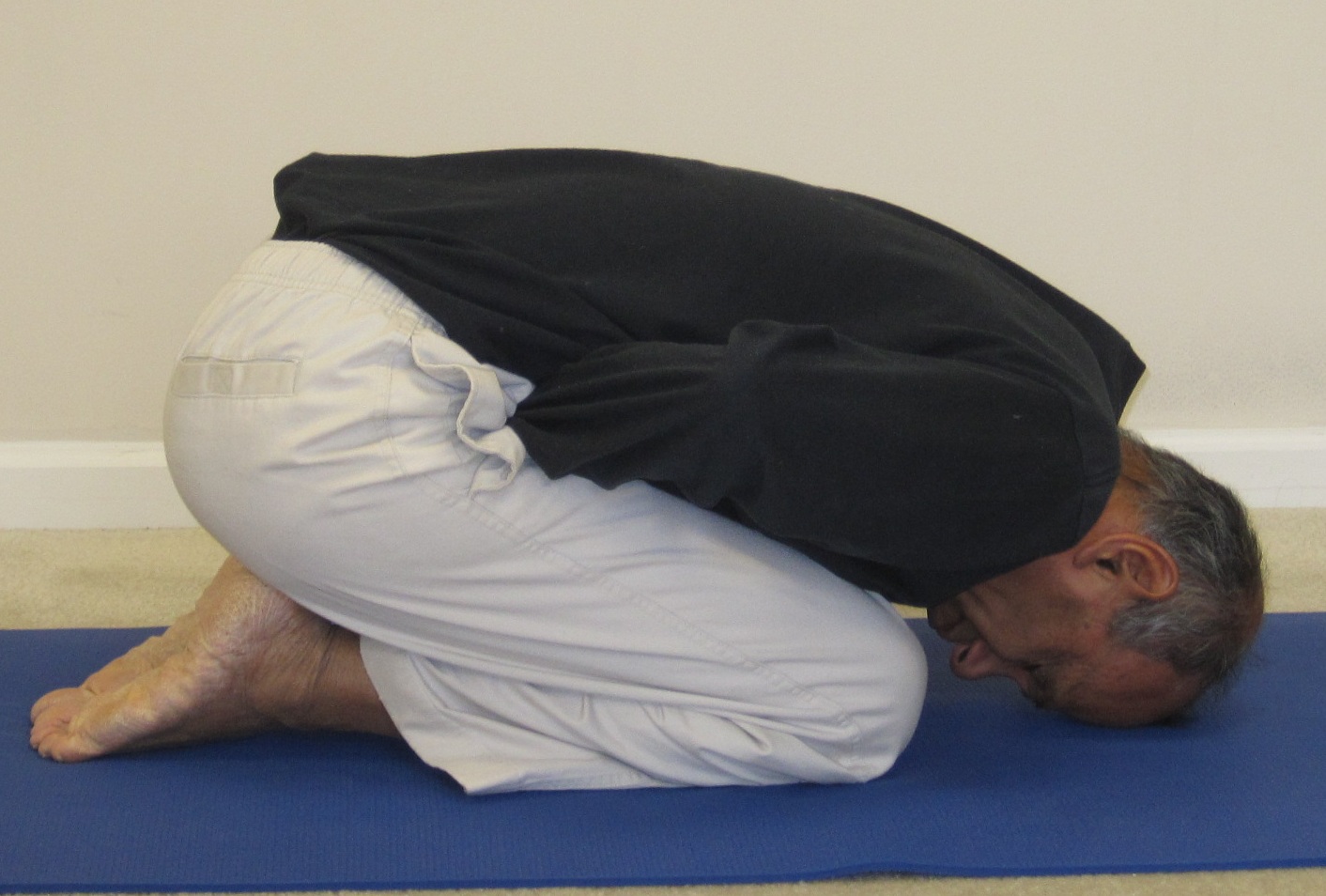
Recent Comments